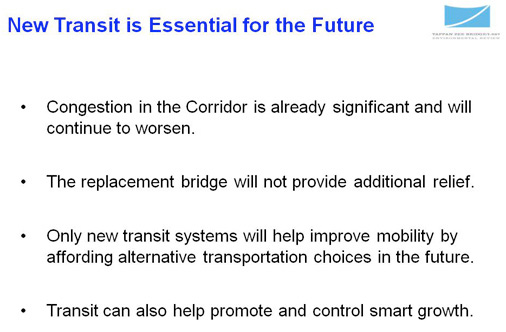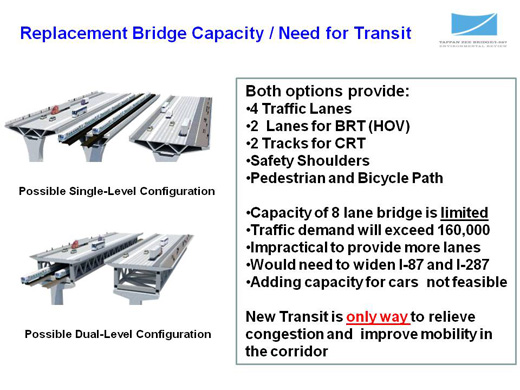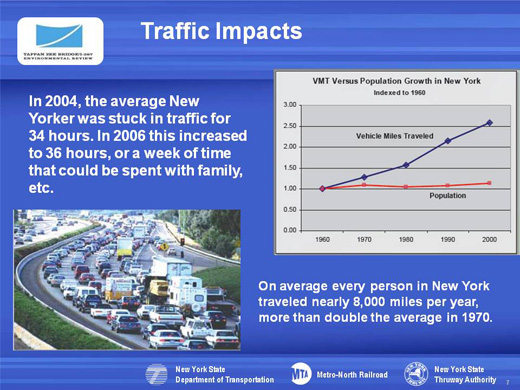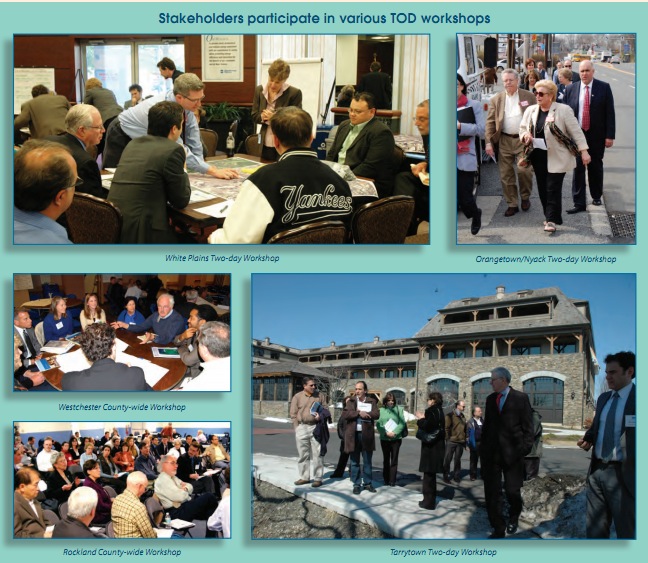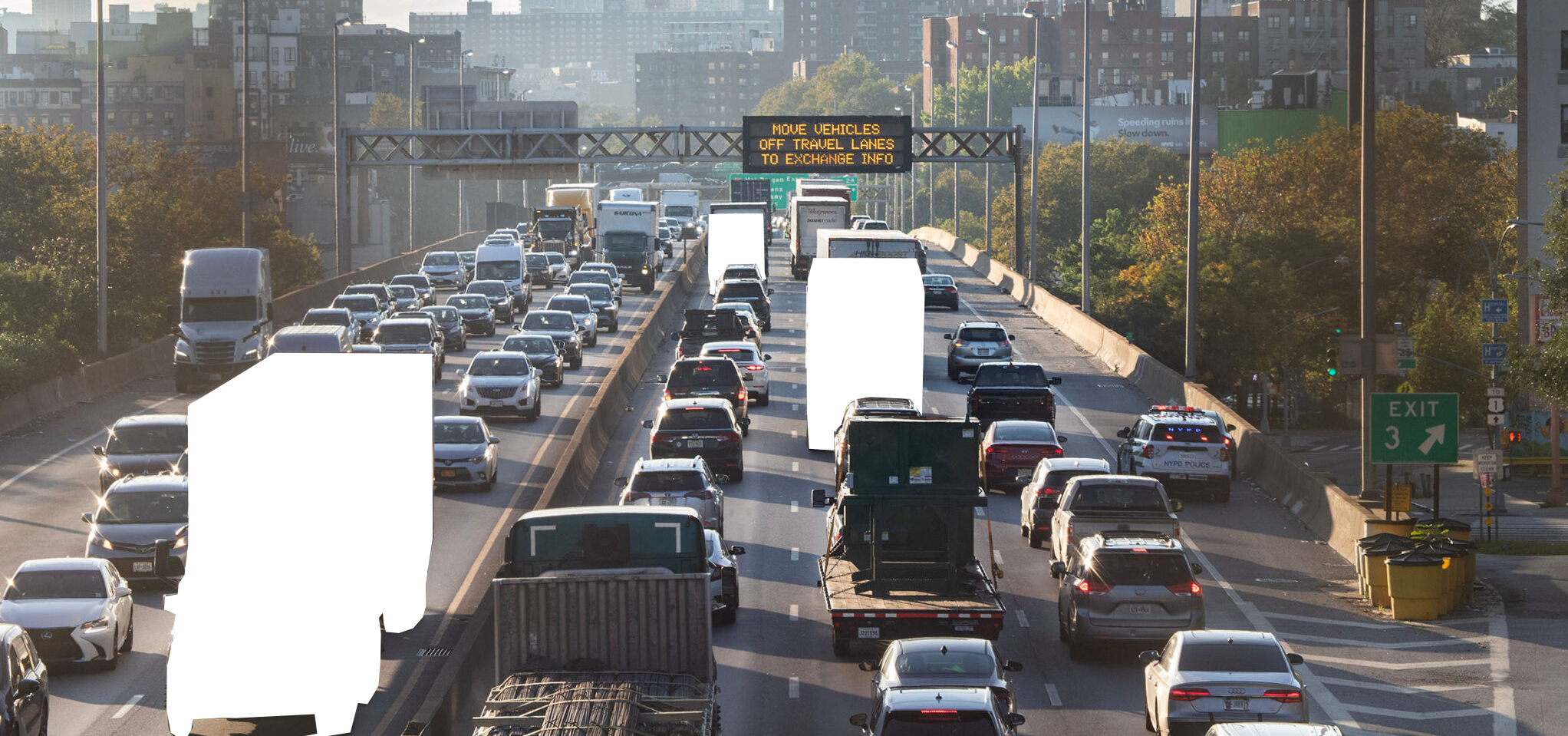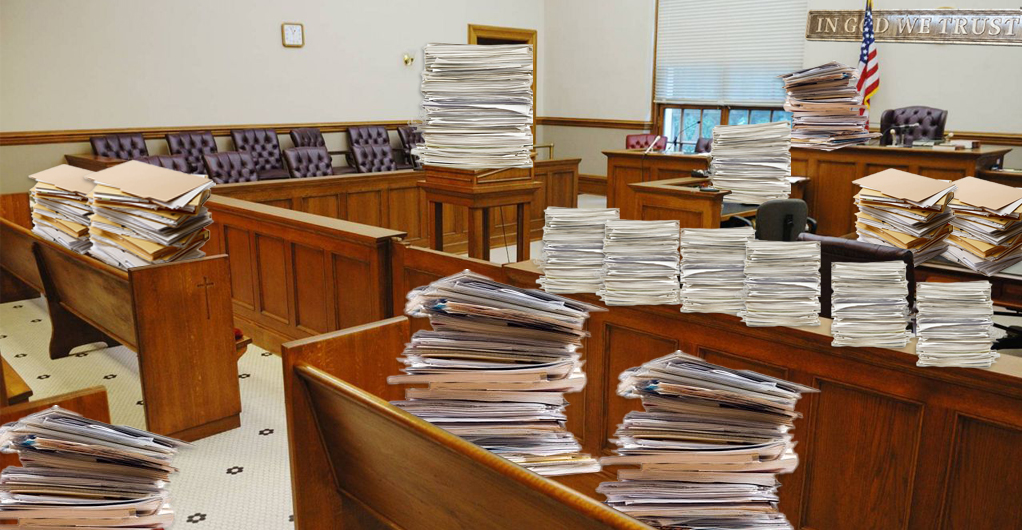After a public outcry, New York State has restored the extensive library of documents generated by nine years of study and public outreach surrounding the construction of the new Tappan Zee Bridge.
Hundreds of pages had disappeared from the project website following the decision by the state and federal governments to scrap transit from the bridge in order to save money and speed up construction. (The official call to build without transit appears to have been made no later than September 26, weeks earlier than previously thought.)
The restored archives show the state's repeated promise to build both rail lines and bus lanes across the bridge. In fact, transit advocates don't have to craft arguments for restoring transit across the bridge. The state's own materials make the case quite persuasively.
Flash back to one year ago: October 19, 2010. The tight budget constraints caused by the ongoing recession were already clear, but the state DOT, the New York State Thruway Authority, and the MTA continued to argue forcefully for including transit over the bridge. It wouldn't be possible to build enough road capacity to ease traffic across the Tappan Zee, the agencies said in a presentation to the Tappan Zee Bridge stakeholder committee: "New Transit is only way to relieve congestion and improve mobility in the corridor." The words "only way" were helpfully set off in red for extra emphasis:
The same presentation noted that just building a new bridge will not help residents of Westchester and Rockland Counties have an easier commute. As Tappan Zee Project Director Michael Anderson told the Rockland County Legislature in October 2010, "We can't build our way out of congestion." The only way to improve commuters' trips, whether to White Plains or Grand Central, is to build transit.
In retrospect, the biggest irony from that October 2010 meeting came when the state promised the Tappan Zee reconstruction would "remain on track," unlike a certain mega-project in neighboring New Jersey. The ARC tunnel, which would have built new rail connections between New Jersey and Manhattan, had just been cancelled by NJ Governor Chris Christie, earning Christie national opprobrium as an opponent of transit and obstacle to regional growth. New York promised not to repeat Christie's policies:
Now that New York has also canceled a major cross-Hudson transit project, the words "we will learn from this!" take on a very different meaning.
Part of the extensive Tappan Zee planning process focused officials on both sides of the river on the need to pair new transit options with new development patterns. On July 21, 2010, state officials presented the stakeholders' land use working group with a long analysis of why the state needed transit-oriented development along the I-287 corridor. The bottom line: The "current pattern of development" was crippling the state.
The presentation noted that New Yorkers spend a full week of every year stuck in traffic, that 39 percent of the state's greenhouse gas emissions come from the transportation sector, and that most children no longer walk or bike to school.
Now, the state is proposing to build a bridge that exactly replicates the "current pattern of development," just with wider highway lanes.
State officials held multi-day workshops in White Plans, Nyack, and Tarrytown, walking through these communities to find the best opportunities for new transit-oriented development. They touted their planning work in this set of photographs, included in the 2010 summer newsletter for the project:
With neither bus rapid transit nor a new Metro-North line included any longer on the Tappan Zee Bridge, there are no new opportunities for transit-oriented development.
The recovered Tappan Zee materials also make clear that eliminating transit from the bridge is a radical break from past planning. This image, from a June 24, 2010 presentation to the stakeholder committee, shows the five alternatives under consideration:
One option would have done nothing (a no-build scenario must be included by law). Each of the other four included both a new Metro-North line and significant bus infrastructure. The only variations between options were the details of the bus lanes.
It is this consensus -- transit as the only way around congestion, transit as the key to new suburban development patterns, transit as the centerpiece of every bridge design -- that Andrew Cuomo and the federal government discarded.
